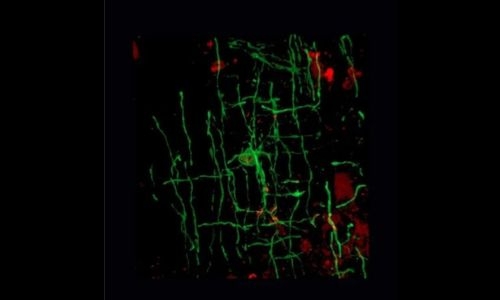Ancient viruses responsible for our big brains and bodies, says study
AFP | Washington
The Daily Tribune – www.newsofbahrain.com
Ancient viruses that infected vertebrates hundreds of millions of years ago played a pivotal role in the evolution of our advanced brains and large bodies, a study said Thursday.
The research, published in the journal Cell, examined the origins of myelin, an insulating layer of fatty tissue that forms around nerves and allows electrical impulses to travel faster.
According to the authors, a gene sequence acquired from retroviruses -- viruses that invade their host’s DNA -- is crucial for myelin production, and that code is now found in modern mammals, amphibians and fish.
“The thing I find the most remarkable is that all of the diversity of modern vertebrates that we know of, and the size they’ve achieved: elephants, giraffes, anacondas, bullfrogs, condors wouldn’t have happened,” senior author and neuroscientist Robin Franklin of Altos Labs-Cambridge Institute of Science told AFP.
A team led by Tanay Ghosh, a computational biologist and geneticist in Franklin’s lab, trawled through genome databases to try to discover the genetics that were likely associated with the cells that produce myelin.
Specifically, he was interested in exploring mysterious “noncoding regions” of the genome that have no obvious function and were once dismissed as junk, but are now recognized as having evolutionary importance.
Ghosh’s search landed upon a particular sequence derived from an endogenous retrovirus, long lurking in our genes, which the team dubbed “RetroMyelin.”
To test their finding, researchers carried out experiments in which they knocked down the RetroMyelin sequence in rat cells, and found they no longer produced a basic protein required for myelin formation.
Next, they searched for RetroMyelin-like sequences in the genomes of other species, finding similar code in jawed vertebrates -- fellow mammals, birds, fish, reptiles and amphibians -- but not in jawless vertebrates or invertebrates.
This led them to believe the sequence appeared in the tree of life around the same time as jaws, which first evolved around 360 million years ago in the Devonian period, called the Age of Fishes.
“There’s always been an evolutionary pressure to make nerve fibers conduct electrical impulses quicker,” said Franklin.
“If they do that quicker, then you can act quicker,” he added, which is useful for both predators trying to catch things, and prey trying to flee.
Related Posts

